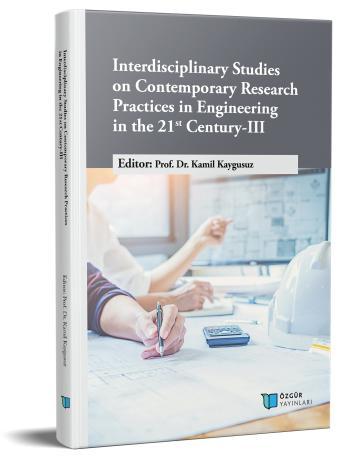
Minimum Miktarda Yağlama Yöntemi İçin Farklı Uygulama Mesafelerinin ve Farklı Kesme Parametrelerinin St37 Çelik İşlenebilirliğine Etkilerinin İncelenmesi
Şu kitabın bölümü:
Kaygusuz,
K.
(ed.)
2023.
21. Yüzyılda Mühendislikte Çağdaş Araştırma Uygulamaları Üzerine Disiplinler Arası Çalışmalar III.
Özet
İmalat endüstrisinde sıklıkla tercih edilen St37 çeliğinin işlenebilirlik özelliklerinin geliştirilmesi ve araştırılması oldukça önemlidir. Bu malzemelerin frezelenmesi esnasında minimum miktarda yağlama (MMY) soğutma/yağlama sisteminin kullanılması gün geçtikçe artmakta fakat bu sistemin içerdiği değişken parametrelerin frezeleme işlemine olan etkileri yeterince araştırılmamıştır. Ayrıca bu sistemin değişken parametrelerinden olan püskürtme mesafelerinin işlenebilirlik parametrelerine olan etkisi de ayrı bir inceleme konusudur. Bundan dolayı, bu çalışmada yaygın bir kullanım alanına sahip St37 sade karbonlu çeliğin kesme derinliği (1 mm) sabit tutularak farklı kesme (140-210 m/dk) ve ilerleme hızlarında (0.14-0.21 mm/dk) MMY destekli soğutma yapılarak CNC frezeleme işlemi gerçekleştirilmiştir. Yapılan çalışma ile farklı kesme ve ilerleme hızları ile farklı MMY püskürtme mesafelerinin (50-250 mm) işlenebilirlikteki çıktı parametreleri (Yüzey pürüzlülüğü, takım aşınması ve kesme sıcaklığı) üzerindeki etkileri araştırılmıştır. Elde edilen bulgulara göre uzun mesafeden uygulanan MMY sıvısı takım aşınması ve kesme sıcaklığı üzerinde olumlu etki yaptığı görülmüştür. MMY uygulama mesafesinin yüzey pürüzlülüğü üzerindeki etkisi ise kesme hızına bağlı olarak değişkenlik gösterdiği tespit edilmiştir.

